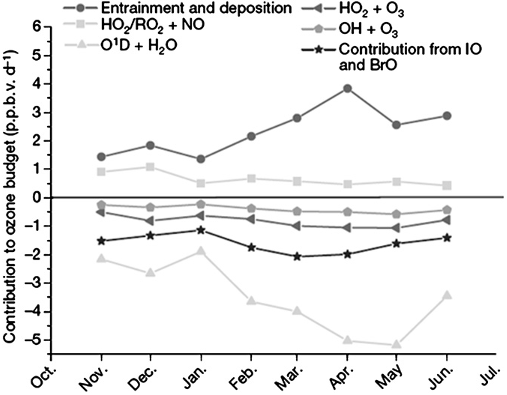Q2. What has led to the emissions of large quantities of pollutants into the atmosphere?
Fossil fuel extraction and burning, energy production and consumption, industrial activities, transportation and landfills have also led to the emissions of large quantities of pollutants into the atmosphere.
Q3. What is the step forward in deriving parameterizations of topographic venting for larger?
A step forward in deriving parameterizations of topographic venting for larger scale models is the quantification of the air mass exchanged vertically on a sub-grid scale.
Q4. What are the main areas where understanding is lacking?
Particular areas where understanding is lacking include uncertainties in the mechanisms of the initial oxidation sequences to first generation products, and limitations in the available information on the subsequent chemistry of many of the classes of product known tobe generated.
Q5. What are the main challenges in the estimation of uncertainties in emissions?
the main challenges in the estimation of uncertainties in emissions are related to the uncertainties in input data and in the development of methods for quantifying systematic errors.
Q6. How can the amount of anthropogenic dust emissions be evaluated?
By overlaying the distribution of frequency of occurrence with land use changes, the amount of anthropogenic dust emissions can be evaluated.
Q7. How have the fire emissions estimates evolved over the last three decades?
Over the last three decades, fire emissions estimates have developed from early inventories based on average fire return times and biomass estimates to detailed studies based on satellite data and sophisticated modelling predicting emissions with high spatial and temporal resolution.
Q8. How has uncertainty in emission scenario analysis been tackled?
Uncertainty in emission scenario analysis at urban scale has also been tackled using Bayesian Monte-Carlo techniques (Deguillaume et al., 2008).
Q9. What is the important aspect of the degradation of aromatic hydrocarbons?
The degradation of aromatic hydrocarbons, although usually only initiated significantly by reaction with OH, can proceed via a number of different routes to generate a large variety of structurally complex ring-retained and ring-opened products e.g.
Q10. How can the authors separate pixels with freshly emitted dust from other aerosols?
As dust has some unique spectral signatures (Dubovik et al., 2002), it is possible to separate pixels with freshly emitted dust from other aerosols.
Q11. What are the technical challenges of HGF measurements in airborne applications?
Technical challenges are also linked to fast hygroscopicity measurements for airborne applications in order to document high altitude hygroscopicity.
Q12. What are the main questions that remain open?
Other questions also remain open, such as whether the concentrated emissions of gases, aerosols and aerosol precursors in the megacities have a substantial impact on regional and global climate.





